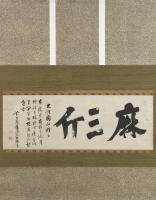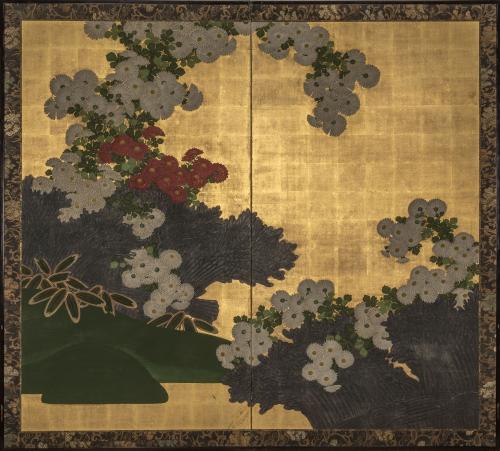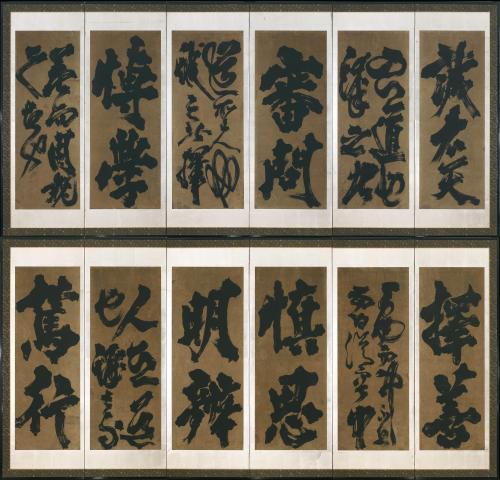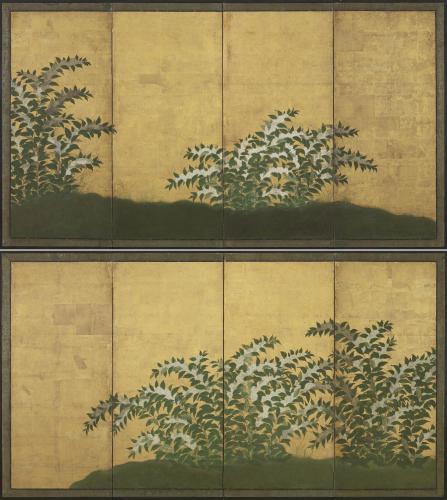
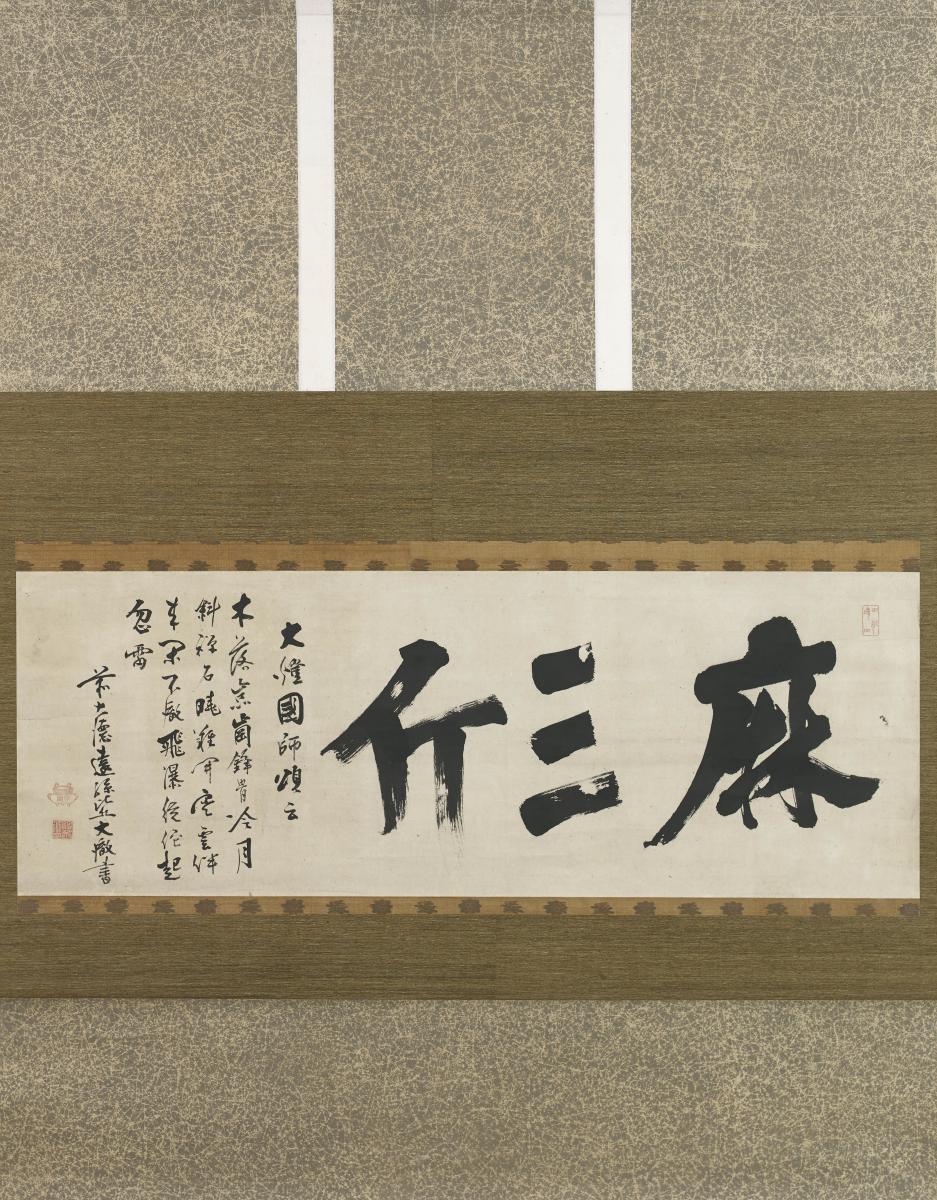
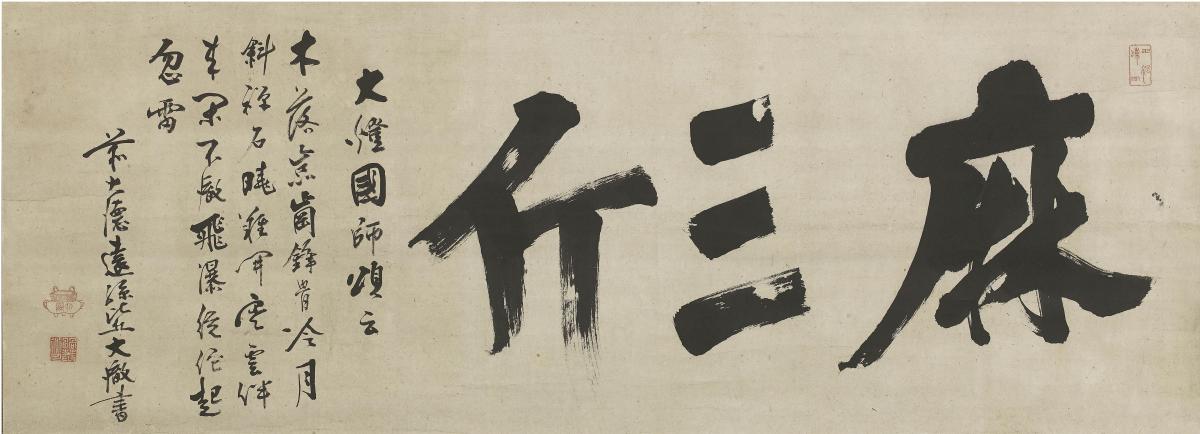
Price on application
This object is eligible for a Certificate of BADA Provenance
The BADA Standard
- Since 1918, BADA has been the leading association for the antiques and fine art trade
- Members are elected for their knowledge, integrity and quality of stock
- Our clients are protected by BADA’s code of conduct
- Our dealers’ membership is reviewed and renewed annually
- Bada.org is a non-profit site: clients deal directly with members and they pay no hidden fees
Daitetsu Sōto (1765-1828), the 430th abbot of Daitoku-ji Temple, Kyoto.
A kakemono (hanging scroll) painted in ink with calligraphy.
Inscribed:
Masangin (Three pounds of flax).
*Daito Kokushi said this: In utter coldness as if the wood has pieced into the rock, I sit under the slanting moon to meditate until dawn overcoming hindrances, chilly clouds are accompanied by penetrating quietude, the gushing splash of a waterfall is heard somewhere along with sudden thundering.
*Allegedly a direct quote from Daitō Kokushi (1282-1338) the second patriarch and founder of Daitokuji Temple, Kyoto.
Seals:
Right: Manji Hōju-ichi.
Left, upper: Daitetsu.
Left, lower: Kaan dojin (The snail studio, a man of Tao).
Japan 18th/19th century Edo period.
Dimensions:
Scroll: H. 57" x W. 42¾" (144.5cm x 108.5cm).
Painting: H. 15" x W. 40¾" (37.7cm x 103.5cm).
Daitetsu Sōto (1765-1828) was the 430th abbot of Daitoku-ji Temple, Kyoto. Daitoku-ji was founded in the early 14th century and is the Headquarters of the Rinzai sect of Zen Buddhism.
Work by the artist can be found in the collection of: The Spencer Museum of Art, The University of Kansas, USA.
Zenga (Zen painting) is a form of teaching: in calligraphy the most common subjects are Zen poems and conundrums. The style of the brushwork is dramatically bold, seemingly impetuous and bluntly immediate in effect. The transition from mind to paper is spontaneous and finished works distill the essence of the Zen experience with simple strokes of the brush. The logic-destroying potential of a Zen Kōan (riddle) becomes visible in the movement of roughly brushed calligraphy.
Kōan consist of anecdotes, conversations with and sayings of the great patriarchs, some legendary and some biographical. They were designed to serve the pupil as a tool in his own religious practices and to eventually lead him to enlightenment.
Stock number
7197The BADA Standard
- Since 1918, BADA has been the leading association for the antiques and fine art trade
- Members are elected for their knowledge, integrity and quality of stock
- Our clients are protected by BADA’s code of conduct
- Our dealers’ membership is reviewed and renewed annually
- Bada.org is a non-profit site: clients deal directly with members and they pay no hidden fees


